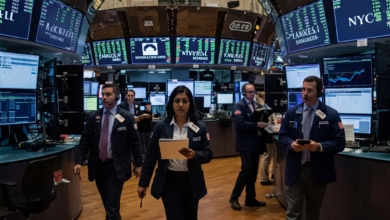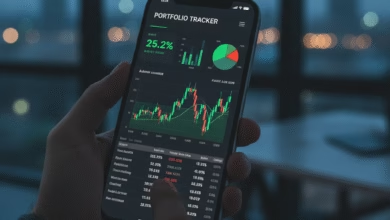What are stock market orders and how do they work?
Learn how buy and sell orders for shares on the stock exchange work

Entering the world of stock market investing is exciting. You’ve done your research, opened a brokerage account, and chosen a company you believe in. You’re ready to click the “buy” button. But then you’re faced with a screen of options you didn’t expect: “Market,” “Limit,” “Stop-Loss.” Suddenly, buying a stock seems more complicated than you thought.
These choices are called orders, and they are the fundamental instructions you give your broker to buy or sell a stock. Far from being a mere technicality, the type of order you choose is one of the most critical decisions you can make. It can determine the price you pay, whether your trade happens at all, and how you manage your risk.
This guide will demystify the world of stock market orders. We will break down the essential order types—from the most basic to the more advanced—in simple, easy-to-understand language. By the end, you’ll have the confidence to use these tools to execute your investment strategy with precision and control.
What Exactly Is a Stock Market Order? The Foundation of Trading

Think of a stock market order as a specific set of instructions you send to your brokerage firm. This instruction tells them what security you want to trade (like shares of Apple, ticker symbol AAPL), whether you want to buy or sell, and the quantity (e.g., 10 shares). Most importantly, it specifies the conditions under which you are willing to make that trade.
Your broker acts as your intermediary. They take your order and route it to a stock exchange (like the New York Stock Exchange or NASDAQ), where buyers are matched with sellers. The type of order you place dictates how your broker will attempt to fill your request in this massive, fast-paced auction environment. Choosing the right order is the difference between shouting “I’ll take it at any price!” and saying “I’m only willing to buy if the price is right.”
The Two Most Important Orders: Market Order vs. Limit Order
For most investors, the vast majority of trades will use one of two fundamental order types. Understanding the difference between them is absolutely essential.
Market Orders: The Need for Speed
A market order is the most basic instruction: buy or sell a stock as soon as possible at the best available price currently on the market.
- Key Feature: It prioritizes speed of execution over price.
- Guarantee: A market order is almost guaranteed to be filled, assuming there are buyers and sellers for that stock.
- The Catch: It does not guarantee the price you will pay or receive. You are at the mercy of the market at the exact moment your order is executed.
When to Use a Market Order:
Market orders are best suited for investing in large, stable, high-volume companies (known as blue-chip stocks) where the price doesn’t fluctuate wildly from second to second. If you’re buying shares of a company like Coca-Cola or Microsoft for a long-term hold, and your primary goal is simply to own the stock without fuss, a market order is generally safe.
The Danger of Market Orders: Understanding “Slippage”
The biggest risk of a market order is slippage. This occurs when the price at which your order is executed is different from the last price you saw quoted on your screen. This can happen in fast-moving markets or with less-frequently traded stocks.
Imagine you want to buy shares of a volatile tech stock quoted at $50.00. You place a market order. In the milliseconds it takes for your order to travel to the exchange, a wave of buying hits, and the best available price is now $50.25. Your order will be filled at $50.25. This 25-cent difference is slippage. While small on a few shares, it can add up. During major market news or at the opening bell, slippage can be significant.
Limit Orders: Taking Control of Your Price
A limit order gives you complete control over your price. It’s an instruction to buy or sell a stock only at a specific price or better.
- Key Feature: It prioritizes price control over speed of execution.
- Guarantee: It guarantees that if the order is filled, it will be at your specified price or a more favorable one.
- The Catch: There is no guarantee of execution. If the stock never reaches your limit price, your order will sit unfilled.
There are two types of limit orders:
- Buy Limit Order: Placed below the current market price. This says, “I want to buy this stock, but I’m only willing to pay a maximum of $X per share.”
- Example: A stock is trading at $105. You place a buy limit order at $100. Your order will only execute if the stock price drops to $100 or lower.
- Sell Limit Order: Placed above the current market price. This says, “I want to sell my shares, but I will only accept a minimum of $Y per share.”
- Example: You own a stock trading at $45. You place a sell limit order at $50. Your order will only execute if the stock price rises to $50 or higher.
For the vast majority of investors, especially those who are not trading for a living, the limit order is the superior and safer choice. It protects you from overpaying and ensures you execute your strategy at the prices you’ve chosen.
Understanding the Bid-Ask Spread: The Hidden Cost of Every Trade

To truly grasp how orders work, you need to understand the bid-ask spread. For any given stock, there are two prices at any moment:
- The Bid Price: The highest price a buyer on the market is currently willing to pay for the stock.
- The Ask Price: The lowest price a seller on the market is currently willing to accept for the stock.
The difference between these two prices is the spread. If the bid is $49.95 and the ask is $50.05, the spread is $0.10.
When you place a market buy order, it typically fills at the ask price ($50.05). When you place a market sell order, it typically fills at the bid price ($49.95). The spread is essentially a small, implicit transaction cost. For highly liquid stocks, this spread is often just a penny. For smaller, less-traded stocks, the spread can be much wider, making market orders particularly risky.
Advanced Order Types for Risk Management and Automation
Beyond the two basic types, brokers offer more sophisticated orders that allow investors to manage risk and automate their trading strategies.
Stop-Loss Orders: Your Portfolio’s Safety Net
A stop-loss order is a defensive order designed to limit your potential loss on a position you already own. It’s an instruction to sell a stock if its price falls to a certain level, known as the “stop price.”
- How it Works: You own a stock at $50 and set a stop-loss at $45. If the stock price drops to $45, your stop price is triggered, and the order instantly becomes a market order to sell at the next available price.
- Purpose: It takes the emotion out of the decision to sell a losing stock, acting as an automatic circuit breaker to prevent a small loss from turning into a catastrophic one.
- Important Caveat: Because it becomes a market order once triggered, it is subject to slippage. In a flash crash where a stock’s price plummets rapidly, your execution price could be significantly lower than your $45 stop price.
Stop-Limit Orders: A More Controlled Exit
A stop-limit order is a two-part order that combines the features of a stop-loss and a limit order, offering more price control on the exit.
- How it Works: It requires two prices: a stop price and a limit price. You own a stock at $50. You might set a stop price at $45 and a limit price at $44.50. If the stock falls to $45, the order is triggered. However, instead of becoming a market order, it becomes a limit order to sell at $44.50 or better.
- Advantage: This protects you from getting a terrible price in a flash crash. Your shares will not be sold for less than your limit price.
- Disadvantage: If the stock price gaps down violently (e.g., from $46 to $43) without any trades in between, your order will be triggered but may not execute because the price is already below your limit. This could leave you holding a stock in freefall.
Trailing Stop Orders: Locking in Profits on Winners
A trailing stop order is a brilliant tool for letting your winning stocks run while still protecting your profits. The stop price is not a fixed number but is set as a percentage or dollar amount below the stock’s market price. This “trailing” stop price automatically adjusts upward as the stock price rises.
- Example: You buy a stock at $100 and set a 10% trailing stop. Your initial stop-loss is at $90.
- If the stock rises to $120, your new stop price automatically moves up to $108 ($120 minus 10%).
- If the stock then falls to $108, the order will trigger and sell your shares, locking in your profit.
- The stop price never moves down. It only ratchets up with the stock’s peak price.
Defining Your Timeline: Order Duration Types

Finally, when you place an order, you need to specify how long it should remain active.
- Day Order (DAY): This is the default setting on most platforms. The order is active only for the current trading day. If it is not filled by the market close, it is automatically canceled.
- Good ’til Canceled (GTC): This order remains active until you either manually cancel it or it is executed. Most brokers put a time limit on GTC orders (e.g., 90 days) to prevent forgotten orders from executing unexpectedly months later. GTC orders are essential for limit and stop orders that you want to leave in place as part of a long-term strategy.
Choosing the Right Order for Your Strategy
Stock market orders are the language you use to communicate with the market. Using them effectively transforms you from a passive passenger into an active driver of your investment journey.
Here’s a simple cheat sheet:
- For most long-term investors buying stable stocks: Use a Limit Order. It’s the safest and gives you total price control.
- If you need to get in or out of a position immediately and the stock is highly liquid: A Market Order is acceptable, but be aware of the risk of slippage.
- To protect yourself from significant downside risk on every stock you own: Use a Stop-Loss or Trailing Stop Order as a core part of your risk management strategy.
By mastering these fundamental tools, you empower yourself to navigate the markets with greater precision, discipline, and peace of mind, paving the way for a more successful investing experience.





